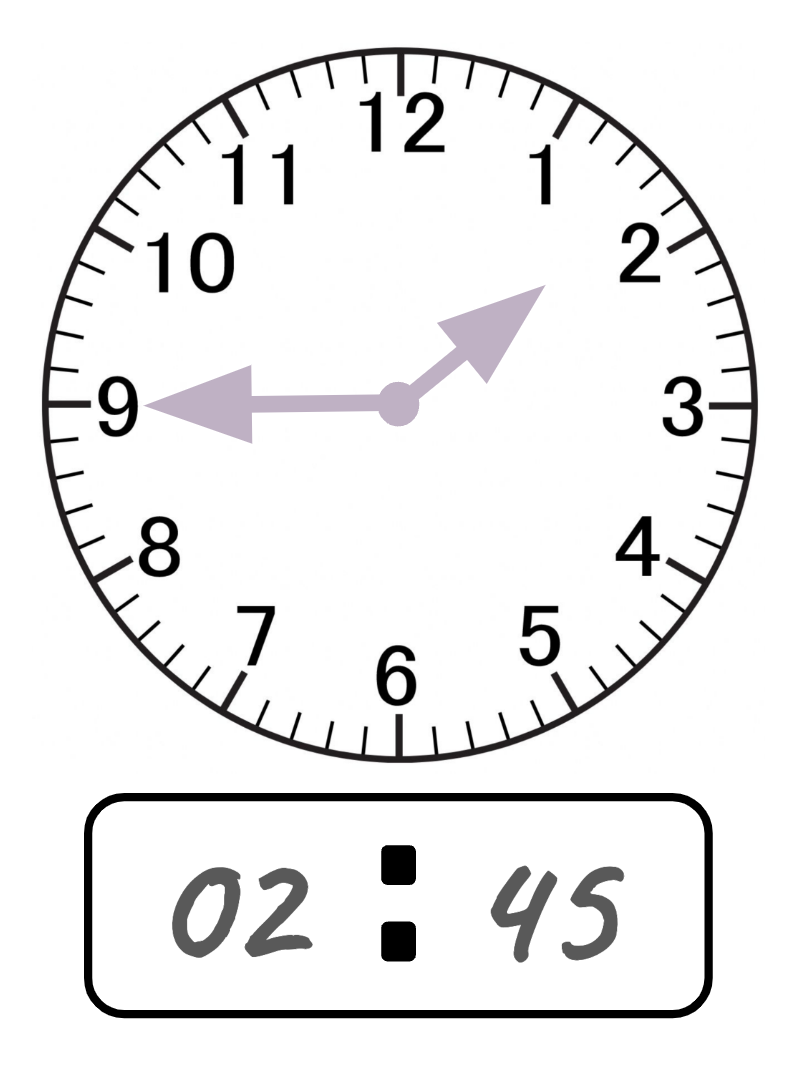Top 3 Common Mistakes Kids Make When Telling Time
Many children find learning to tell the time tricky - and with good reason, it’s a very abstract concept!
When it comes to helping your child with telling time, it can be a frustrating experience.
Let’s look at the top 3 common mistakes we see kids make. We’ll explain the misconceptions, and give strategies to help teach time in a way your child understands.
Common Mistake #1
Hour confusion
You can see the hour hand is falling between two numbers, so children often find this confusing. The misconception grows from being told to ‘look at what the hour hand is pointing to’ instead of understanding how it works, but having a deeper understanding will help.
How to solve this misconception
Try taking it back to the nearest o’clock (e.g. 8 o’clock), then let your child observe the hands moving to half past the hour (e.g. half past 8). At this point, highlight that the minute hand is halfway around the clock, and that the hour hand is half way past the hour.
Then continue moving the hands to the next o’clock (e.g. 9 o’clock), and repeat to half past the hour (e.g. half past 9). Again, prompt your child to observe how the hour hand is now half way past the hour.
You can prompt your child to think about what the hour is by showing them what the previous o’clock time was. This is a very visual way to help your child understand how time works.
Avoid confusion: What not to say…
Don’t say: Look at what the hour hand is pointing to
Instead try: What hour is it?
It’s particularly confusing when a child has been told to look at what the hour hand is pointing to…as it does look very close!
Common Mistake #2
Telling ‘to’ time on a digital clock
Difficulty with telling ‘to’ times on a digital clock is very common. This is because when reading analog clocks, a time that is more than 30 minutes past, we switch to ‘to’ times (e.g. we say 20 to 5). This can be confusing, but there’s a simple way around this.
How to solve this misconception
Try this strategy: it’s a visual prompt to help your child remember that with digital clocks, we always refer to ‘minutes past the hour’.
You’ll notice that this also links with thinking about the hour, which supports common mistake #1.
Top Tip
Spit the clock in half. Label the ‘to’ and ‘past’ side to avoid confusion when learning to read time.
Common Mistake #3
Mixing up the clock hands
Confusing the hour and minute hands is quite common when a child is in the early stages of learning to tell time. Forgetting to count in 5s for the minute hand can happen too, however it’s important to check they aren’t missing the foundation skills.
How to solve this misconception
If your child is making this sort of error, it’s possible that they haven’t yet grasped some of the basics. If this is the case, it’s important to take a step back and cover the foundational skills first. It’s worth having a read of How to Teach Your Child to Tell Time, if you haven’t already.
However, if your child has this foundational understanding, and is simply forgetting which hand is which, then here are some strategies to help.
Try teaching the hour and minute hand separately, starting with the hour hand. Then focus on the minute hand once secure, showing how we can count in 5s. Teaching the hands separately will help.
Have the colour of the hands correspond with the numbers. Below is a snapshot of a virtual clock we use in our tutoring sessions.
Tutoring that fits you, not the other way round
Online tutoring is the go-to for parents these days, due to its incredible flexibility and higher levels of engagement for the child.
Time to get help?
Learning to tell the time is one of those areas that often require a very individualised approach.
Our tutors and qualified primary teachers, and are experienced with identifying misconceptions, and teaching children in ways that makes sense to them. They are experts at breaking down learning into simple steps to help children grasp concepts that children find challenging.
If your child is struggling with a particular learning area (or a few!) get in touch with us. Our tutors will assess your child to identify learning gaps and plan tailored lessons for your unique child’s learning needs. That’s why parent’s love our tutoring sessions (and so do the kids we work with!)
Why not book a call and have a chat with us. Alternatively, you can drop us an email at info@attaineducation.com.au
We’d love to know more about your child and their unique learning needs, and discuss how we can help.










